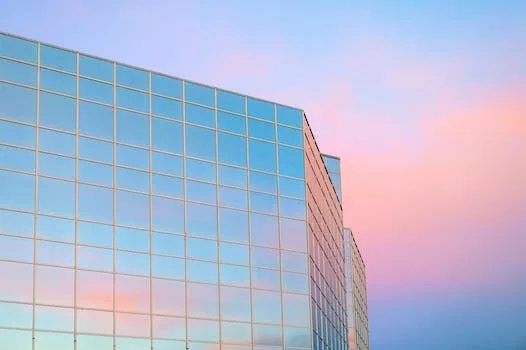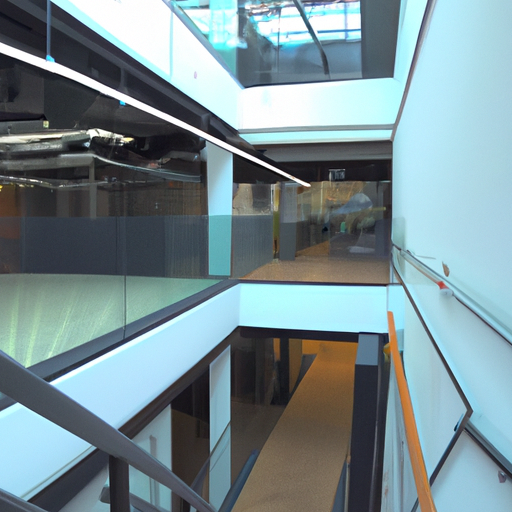Enhancing Community Engagement through Thoughtful Common Area Design
The importance of well-designed common areas in modern complexes cannot be overstated. As urban populations continue to grow and living spaces become increasingly compact, the need for shared spaces that foster a sense of community and enhance the quality of life for residents becomes paramount. Thoughtful common area design can play a crucial role in promoting community engagement, encouraging social interaction, and ultimately, creating a more vibrant and cohesive living environment.
One of the primary objectives of well-designed common areas is to create spaces that are inviting and comfortable for residents to use. This can be achieved through the careful selection of furniture, lighting, and other design elements that contribute to a warm and welcoming atmosphere. By providing seating arrangements that encourage conversation and interaction, common areas can become natural gathering spots for residents to socialize, relax, and build connections with their neighbors.
In addition to fostering social interaction, thoughtfully designed common areas can also serve as venues for community events and activities. By incorporating flexible spaces that can be easily adapted for various purposes, modern complexes can provide residents with opportunities to participate in a wide range of events, from fitness classes and workshops to movie nights and holiday celebrations. These events not only bring residents together but also help to create a sense of belonging and shared identity within the community.
Another important aspect of common area design is the integration of green spaces and natural elements. Research has shown that exposure to nature can have numerous physical and mental health benefits, including reduced stress, improved mood, and increased cognitive function. By incorporating elements such as plants, water features, and natural materials into common areas, designers can create spaces that promote relaxation and well-being for residents. Furthermore, the inclusion of outdoor common areas, such as gardens, courtyards, and rooftop terraces, can provide residents with valuable opportunities to connect with nature and enjoy fresh air and sunlight.
Accessibility is also a key consideration in the design of common areas. In order to promote inclusivity and ensure that all residents can fully participate in community life, it is essential that common areas are designed to be easily navigable and accessible to individuals with varying levels of mobility. This can be achieved through the incorporation of ramps, wide doorways, and other design features that facilitate ease of movement for all residents.
Finally, the incorporation of technology into common area design can further enhance community engagement and connectivity. By providing residents with access to high-speed Wi-Fi, charging stations, and other technological amenities, modern complexes can create spaces that are not only conducive to social interaction but also support the diverse needs of today’s digitally connected residents.
In conclusion, the importance of well-designed common areas in modern complexes cannot be overstated. By creating spaces that are inviting, comfortable, and conducive to social interaction, designers can play a crucial role in fostering a sense of community and enhancing the quality of life for residents. Furthermore, by incorporating elements such as green spaces, accessibility features, and technology, common areas can serve as valuable resources that support the physical, mental, and social well-being of residents. As urban living continues to evolve, the thoughtful design of common areas will remain a critical component in creating vibrant, cohesive, and inclusive communities.
The Role of Aesthetics and Functionality in Modern Common Areas

The importance of well-designed common areas in modern complexes cannot be overstated. As urban populations continue to grow and space becomes increasingly scarce, the need for shared spaces that are both aesthetically pleasing and functional has become paramount. These common areas, which can include lobbies, courtyards, rooftop gardens, and other communal spaces, serve as vital hubs for social interaction, relaxation, and even productivity. By striking the right balance between aesthetics and functionality, developers and architects can create spaces that not only enhance the overall appeal of a complex but also contribute to the well-being and satisfaction of its residents.
Aesthetics play a crucial role in shaping the overall atmosphere and experience of a common area. A well-designed space can evoke a sense of comfort, belonging, and pride among residents, fostering a sense of community and encouraging social interaction. This is particularly important in modern urban environments, where people often lead busy, isolated lives and may have limited opportunities for meaningful social connections. By incorporating visually appealing elements such as greenery, artwork, and comfortable seating, designers can create spaces that are inviting and conducive to relaxation and conversation.
In addition to aesthetics, functionality is a key consideration in the design of modern common areas. A well-designed space should be versatile and adaptable, catering to the diverse needs and preferences of its users. This may involve providing a mix of seating options, from cozy nooks for quiet contemplation to larger, more open areas for group gatherings. It may also involve incorporating features such as Wi-Fi connectivity, charging stations, and even workspaces, allowing residents to use the space for a variety of purposes, from remote work to leisurely pursuits.
One emerging trend in the design of modern common areas is the integration of biophilic elements, which seek to establish a connection between the built environment and nature. This can be achieved through the incorporation of natural materials, such as wood and stone, as well as the inclusion of plants and water features. Research has shown that exposure to nature can have a range of positive effects on mental and physical well-being, including reduced stress, improved mood, and increased cognitive function. By incorporating biophilic design principles, architects and developers can create common areas that not only look beautiful but also promote the health and well-being of their users.
Another important aspect of modern common area design is sustainability. As awareness of environmental issues continues to grow, there is increasing demand for spaces that are not only visually appealing but also environmentally responsible. This can be achieved through the use of energy-efficient lighting, water-saving fixtures, and sustainable materials, as well as the incorporation of green roofs and walls, which can help to reduce energy consumption and improve air quality.
In conclusion, the importance of well-designed common areas in modern complexes cannot be overstated. By prioritizing both aesthetics and functionality, architects and developers can create spaces that are not only visually appealing but also versatile, adaptable, and conducive to social interaction. Furthermore, by incorporating elements of biophilic design and sustainability, they can create spaces that promote the well-being of their users and minimize their environmental impact. As urban populations continue to grow and space becomes increasingly scarce, the need for well-designed common areas will only become more pressing, making it essential for architects and developers to rise to the challenge and create spaces that meet the diverse needs and preferences of modern urban dwellers.
Boosting Property Value with Attractive and Efficient Common Spaces
The importance of well-designed common areas in modern complexes cannot be overstated. As urbanization continues to increase, the demand for residential and commercial spaces that offer a sense of community and foster social interaction is on the rise. Common areas, such as lobbies, courtyards, and rooftop gardens, play a crucial role in meeting this demand by providing attractive and efficient spaces for residents and visitors to gather, relax, and engage with one another. In addition to enhancing the overall living experience, well-designed common areas can significantly boost property value, making them a smart investment for property developers and owners alike.
One of the primary reasons that well-designed common areas are so valuable is that they help to create a sense of community within a complex. In today’s fast-paced world, people are increasingly seeking out living environments that offer opportunities for social interaction and connection. By providing inviting and comfortable spaces for residents to gather, common areas can help to foster a sense of belonging and encourage residents to form lasting relationships with their neighbors. This, in turn, can lead to increased tenant satisfaction and retention, which is a key factor in maintaining a property’s value over time.
In addition to fostering a sense of community, well-designed common areas can also contribute to a property’s overall aesthetic appeal. As the first point of contact for many visitors and potential residents, common areas such as lobbies and entranceways serve as a crucial opportunity to make a positive first impression. By investing in high-quality materials, finishes, and furnishings, property owners can create a welcoming and visually appealing environment that sets the tone for the rest of the complex. This attention to detail can help to attract prospective tenants and buyers, ultimately driving up property values.
Another important aspect of well-designed common areas is their ability to maximize the use of available space. In urban environments where space is often at a premium, it is essential for property developers and owners to find creative ways to make the most of every square foot. By incorporating multi-functional features and flexible design elements, common areas can be transformed into versatile spaces that cater to a wide range of needs and preferences. For example, a rooftop garden can serve as both a relaxing outdoor oasis for residents and an attractive venue for hosting events, while a well-equipped fitness center can provide a convenient on-site amenity that appeals to health-conscious tenants.
Furthermore, the incorporation of sustainable design principles and energy-efficient technologies in common areas can also contribute to a property’s overall value. As environmental concerns become increasingly important to consumers, properties that demonstrate a commitment to sustainability and eco-friendly practices are likely to be more attractive to potential tenants and buyers. By incorporating features such as energy-efficient lighting, water-saving fixtures, and green building materials, property owners can not only reduce their environmental footprint but also lower operating costs and increase the long-term value of their investment.
In conclusion, the importance of well-designed common areas in modern complexes cannot be overstated. By creating attractive and efficient spaces that foster a sense of community, enhance aesthetic appeal, maximize the use of available space, and incorporate sustainable design principles, property developers and owners can significantly boost the value of their properties. As urbanization continues to reshape the way we live and work, it is essential for those in the real estate industry to recognize the vital role that common areas play in shaping the overall experience of residents and visitors alike. By investing in well-designed common spaces, property owners can not only improve the quality of life for their tenants but also secure a strong return on their investment.
Q&A
Question 1: What are the key benefits of well-designed common areas in modern complexes?
Answer 1: Well-designed common areas in modern complexes promote social interaction, enhance the aesthetic appeal of the property, and contribute to the overall well-being and satisfaction of residents.
Question 2: How do well-designed common areas contribute to the sustainability of modern complexes?
Answer 2: Well-designed common areas can incorporate eco-friendly features such as energy-efficient lighting, green spaces, and proper waste management systems, which contribute to the overall sustainability of the complex.
Question 3: How do well-designed common areas impact the property value of modern complexes?
Answer 3: Well-designed common areas can increase the property value of modern complexes by attracting potential buyers or tenants who value a sense of community, aesthetics, and functionality in their living environment.
Conclusion
In conclusion, well-designed common areas in modern complexes play a crucial role in enhancing the quality of life for residents and visitors. They foster social interaction, promote a sense of community, and provide functional spaces for various activities. Additionally, aesthetically pleasing and sustainable designs contribute to the overall appeal and value of the complex, making it a desirable place to live and work. Therefore, prioritizing the design and maintenance of common areas is essential for the success and longevity of modern complexes.


